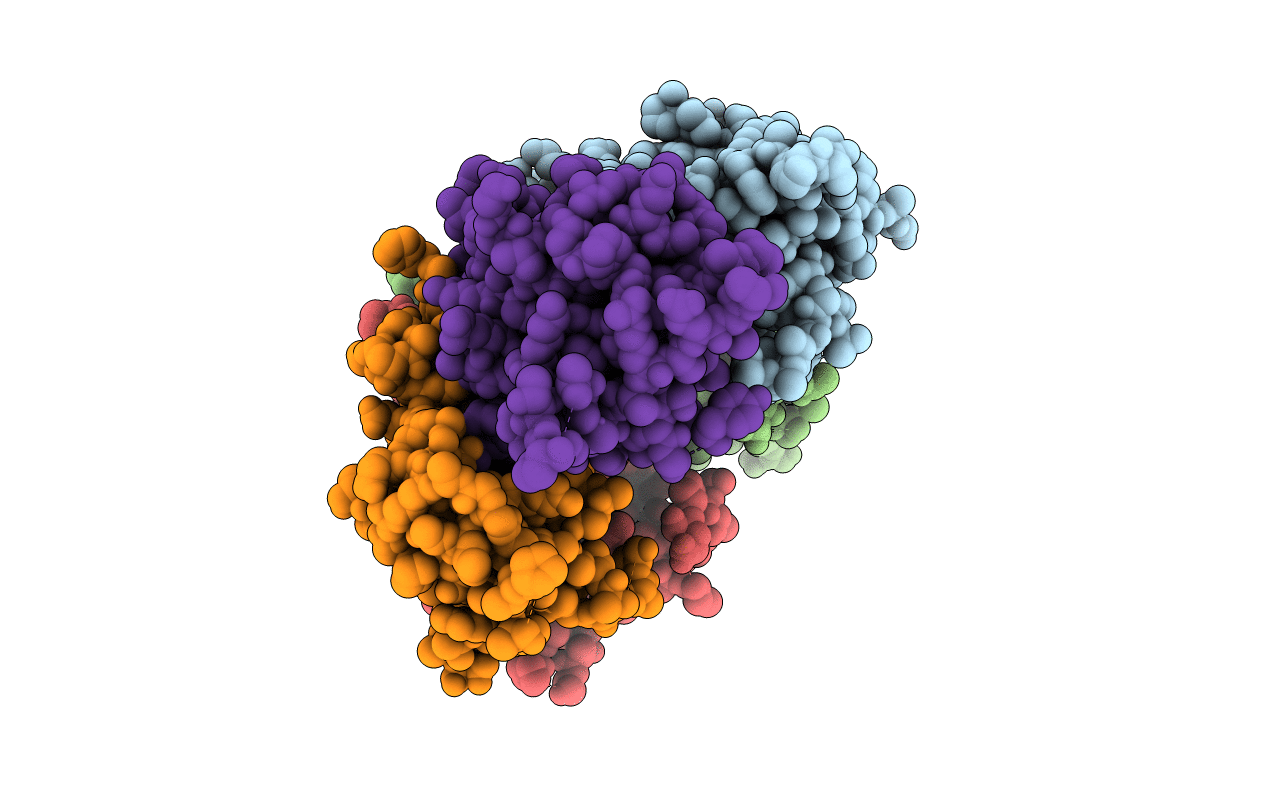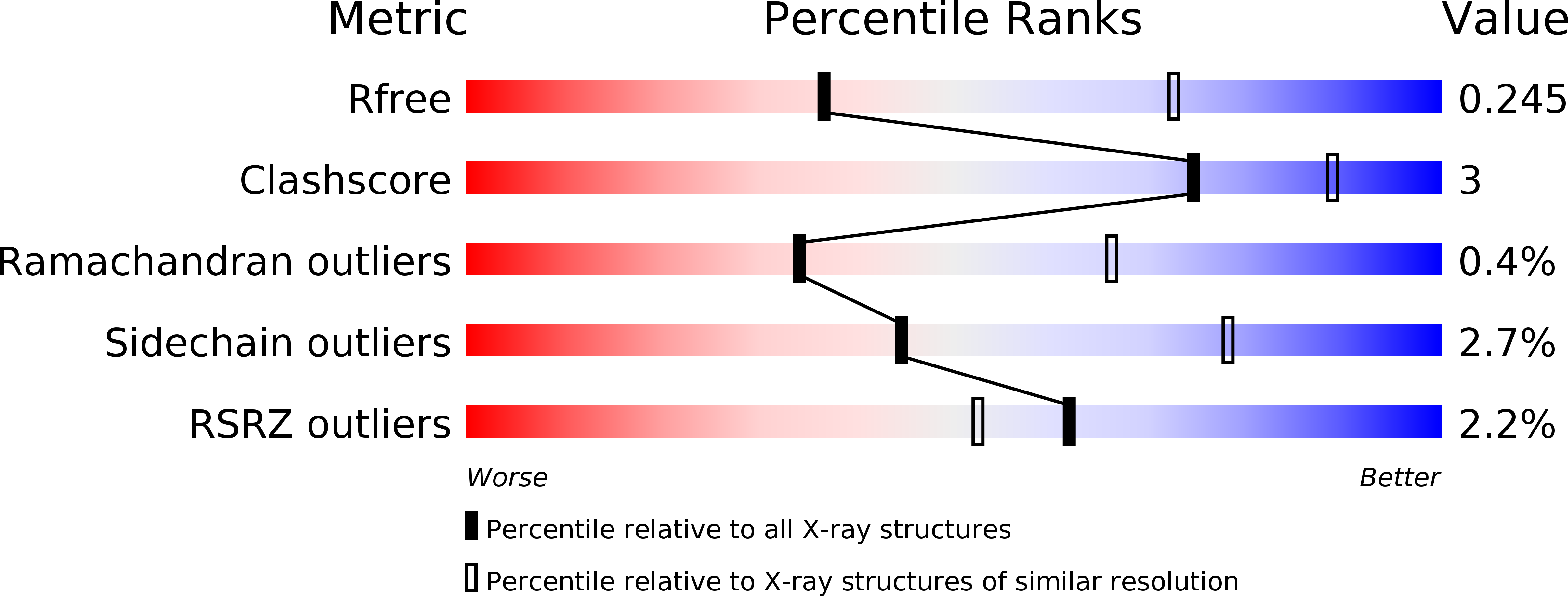
Deposition Date
2012-05-01
Release Date
2012-07-11
Last Version Date
2024-11-06
Entry Detail
PDB ID:
4EXW
Keywords:
Title:
The structure of DdrB from Deinococcus: a new fold for single-stranded DNA binding proteins.
Biological Source:
Source Organism:
Deinococcus geothermalis DSM 11300 (Taxon ID: 319795)
Host Organism:
Method Details:
Experimental Method:
Resolution:
2.80 Å
R-Value Free:
0.25
R-Value Work:
0.23
R-Value Observed:
0.23
Space Group:
P 32


